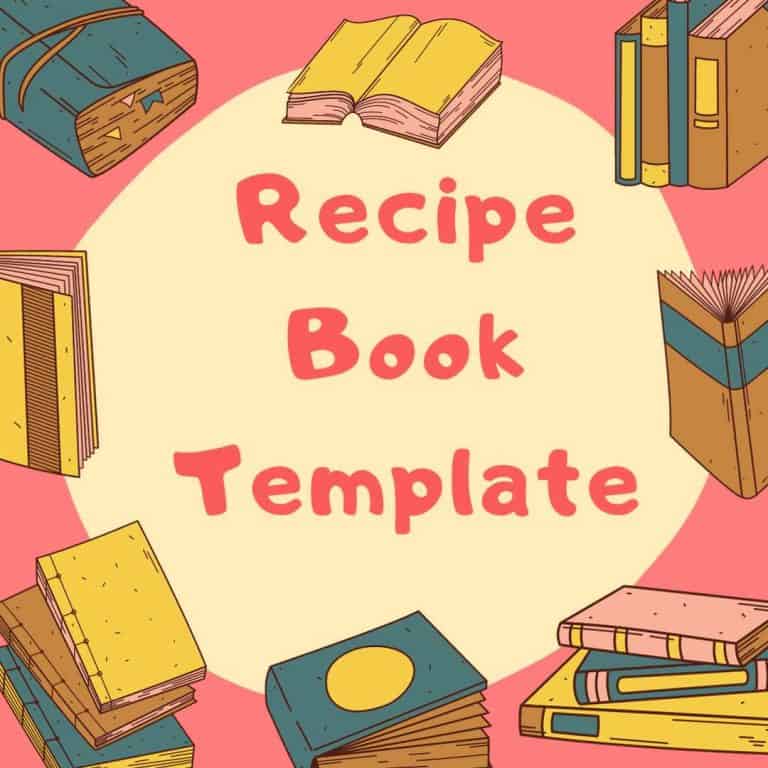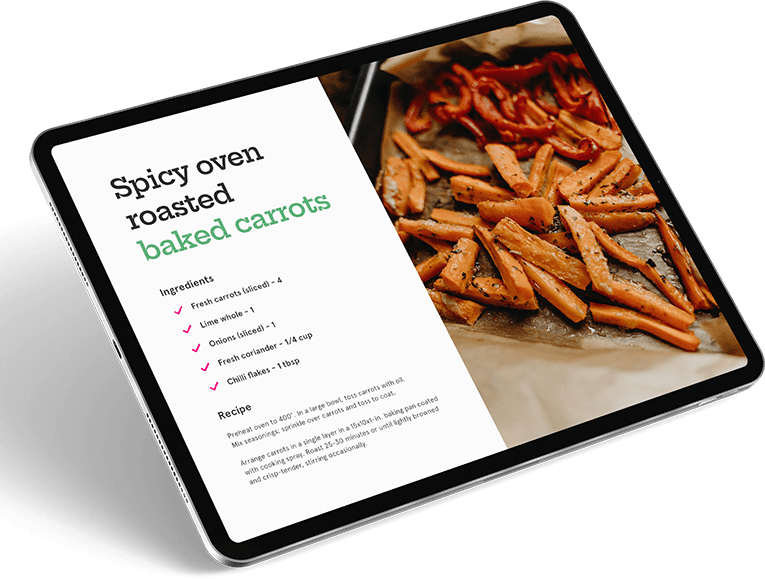Are you a passionate chef or culinary enthusiast looking to share your love of food?
Do you dream of compiling your best recipes into a stunning recipe book showcasing your culinary prowess but need to know where to start?
This blog post will explore what you must do to draft your first recipe book. We’ll cover everything you need to know, from setting the theme to writing the recipes. Keep on reading, and let’s create your dream cookbook today.
Table of Contents
ToggleWhy Should You Make a Recipe Book?
There are no definite reasons why one wants to create a recipe book. It could be a childhood dream, a way to preserve their family’s legacy or a way to help a particular group of individuals. Here are some common reasons to start making your recipe book.
Share Your Passion
Creating a recipe book allows you to share your love for cooking and unique culinary creations with a broader audience. For many food enthusiasts, creating a new recipe is part of their regular kitchen routine. Whether you’re a professional chef or a home cook with a flair for flavor, a recipe book is a fantastic medium to showcase your creations.
Build Your Brand
A well-crafted recipe book can be a powerful branding tool for chefs and food bloggers. It establishes you as an authority in your niche and can increase visibility and credibility in the culinary world. A recipe book can also serve as your portfolio in the culinary industry and opens a wide range of opportunities for you.
Preserve Family Recipes
Recipe books are a beautiful way to preserve cherished family recipes, ensuring your culinary legacy lives on for generations. Food is an integral part of all cultures around the world. If your family crafted an innovative take on your cultural dishes or has unique recipes passed down through the generations, putting them in a recipe book is an excellent way to immortalize family traditions.
When Should You Consider Creating a Recipe Book?
Timing is vital when it comes to creating a recipe book. Here are a few scenarios when you should seriously consider embarking on this culinary feat:
-
- When You Have a Collection of Outstanding Recipes: If you’ve been refining your recipes for years and have a selection of crowd-pleasers, it’s time to share them with the world.
-
- After Gaining Experience: If you’ve honed your cooking skills and gained valuable culinary experience, it’s the perfect moment to capture your expertise in a recipe book.
-
- To Promote Your Culinary Business: If you own a restaurant, catering service, or food-related business, a recipe book can be a fantastic marketing tool to promote your brand and reach new customers.
What Makes a Good Recipe Book?
Creating a successful recipe book goes beyond simply listing recipes. Here are some key elements that make a recipe book stand out.
Great Recipes
First and foremost, your book should feature exceptional recipes that your target audience has tried, tested, and loved. An excellent collection of recipes is the backbone of your cookbook and sets the precedent for where your recipe book is heading. These recipes should represent your unique culinary style and personality.
Aesthetically Pleasing
People eat with their eyes first, so it’s crucial to have visually stunning food photography. It might sound flavorless, but you must capture the eyes first to ensure your target readers will pick up your book. High-quality images of your dishes can make readers want to cook your recipes. At KitchenBloggers, we sell a collection of first-rate and crisp food photographs to amplify the aesthetics of your recipe book.
Actionable Instructions
Clear and concise instructions are vital. A great recipe book is easy to follow and doesn’t alienate your target readers. Fill your cookbook with simple and actionable words. Ensure your readers can efficiently execute your instructions within their culinary skill level limits.
A Great Story
A recipe book should tell a story. Remember that a recipe book is, at its core, a reader should tell a beautiful story to be effective. Share anecdotes, personal experiences, and the inspiration behind each dish. This personal touch can make your book more engaging and relatable.
Readable for the Target Audience
Consider your audience’s preferences and skill levels. Adapt your writing style and recipe complexity accordingly. Don’t fill your recipe book with industrial verbiage if your target audiences are home cooks or inexperienced culinarians. Include technical terms and specifics if you’re writing an advanced recipe book.
How Do You Make Your First Recipe Book?
Now that you know what makes a page-turning recipe book, it’s time to put these concepts into practice. Each cook’s creation process might differ, but here are the general steps you should follow.
Decide on the Theme of the Book
A well-defined theme can make your book more compelling and attractive. Choose a piece that ties your recipes together. It could be a regional cuisine, a specific ingredient, or a culinary journey through the seasons. The theme you choose for your cookbook should remain consistent throughout the book.
Compile and Organize Your Recipes
Start by compiling all your recipes in one place. Organize them into categories or chapters based on themes, cuisines, or meal types. This process will help you create a cohesive structure for your book. Make sure to digitize and back up your files for emergency purposes.
Source High-Quality Photos
Stunning food photography is a must for any recipe book. If you need to become a professional photographer, consider collaborating with a photographer or investing in high-quality stock photos. KitchenBloggers.com offers original recipes and food photography that you can license for commercial use.
Start Writing the Content of the Book
With your recipes and photos in hand, start writing the content for your book. Craft engaging introductions for each recipe, share your personal stories and provide any relevant tips or variations. Remember, a recipe book should tell a relatable and moving story, not just showcase your mastery in the kitchen.
Put Them All Together and Personalize
Now comes the exciting part — putting everything together into your recipe book. Compile all the materials seamlessly and ensure your reader has a great reading experience. Use visual storytelling techniques to achieve these results when laying out your recipe book.
Recipe Book Creation Tips
Creating your first recipe book is a huge ordeal. It could be pivotal for your culinary career and help you make your mark in your niche. Here are some tips to make the process more bearable for you.
Utilize a Recipe Book Template
A recipe book template streamlines the book-making process. It provides a professionally designed framework for your content, ensuring a polished and visually appealing final product. KitchenBloggers offers a fantastic recipe book template that’s customizable to your needs. Whether you’re making an ethnic recipe book or a collection of recipes you invented during the pandemic lockdown, our template offers the flexibility to showcase your unique style.
Use Professional Photographs
Invest in high-quality food photography. Beautiful images can elevate your book and make it more enticing to readers. Using high-quality stock photos is all right, but a professionally photographed recipe photo takes your recipe book to the next level. We offer a collection of high-quality and professionally photographed foods to capture your reader’s eye.
Include Familiar and Unique Dishes
While showcasing unique creations is exciting, remember to include some familiar dishes your readers can relate to. A mix of both can cater to a broader audience. If you have a unique take on a popular dish, you can include it in your recipe book to keep your target readers manageable.
Build Your Audience List Beforehand
If you have a blog, website, or social media presence, build an audience interested in your culinary creations before you launch your recipe book. You can launch an email campaign promoting your recipe books or other methods to excite your readers for your next feat. This existing audience can become your customers and reviewers, giving your book a solid start.
Share Your Culinary Prowess to the World
Creating a recipe book is a rewarding endeavor that allows you to share your culinary expertise, passion, and unique recipes with the world. Whether you are a professional chef or an avid home cook, KitchenBloggers’ recipe book template can help you bring your culinary vision to life.
With our original recipe and food photography, you can create a visually stunning and professionally crafted recipe book that captures the essence of your culinary creativity. We also offer a recipe book template to simplify your creation process. Download one of our recipe book templates, and let the world savor your culinary creativity.
FAQs
Does Word have a recipe book template?
Yes, Microsoft Word offers various templates, including recipe book templates, which you can access by searching “recipe book” in the template gallery.
How can I make my recipe book?
You can create a recipe book by organizing recipes in a consistent format using a tool like Word or specialized software. Include categories, recipes, images, and a table of contents for easy navigation.
How do you format a recipe book?
Format your recipe book consistently in layout, font styles, and sizing. Use headings for recipe names, including ingredient lists, step-by-step instructions, cooking times, and servings. Incorporate images for visual appeal.
What is the content of a recipe book?
A recipe book typically includes a table of contents, sections, or categories for different dishes (appetizers, mains, desserts, etc.), individual recipes with ingredients, instructions, cooking tips, and sometimes personal anecdotes or stories related to the recipes.


